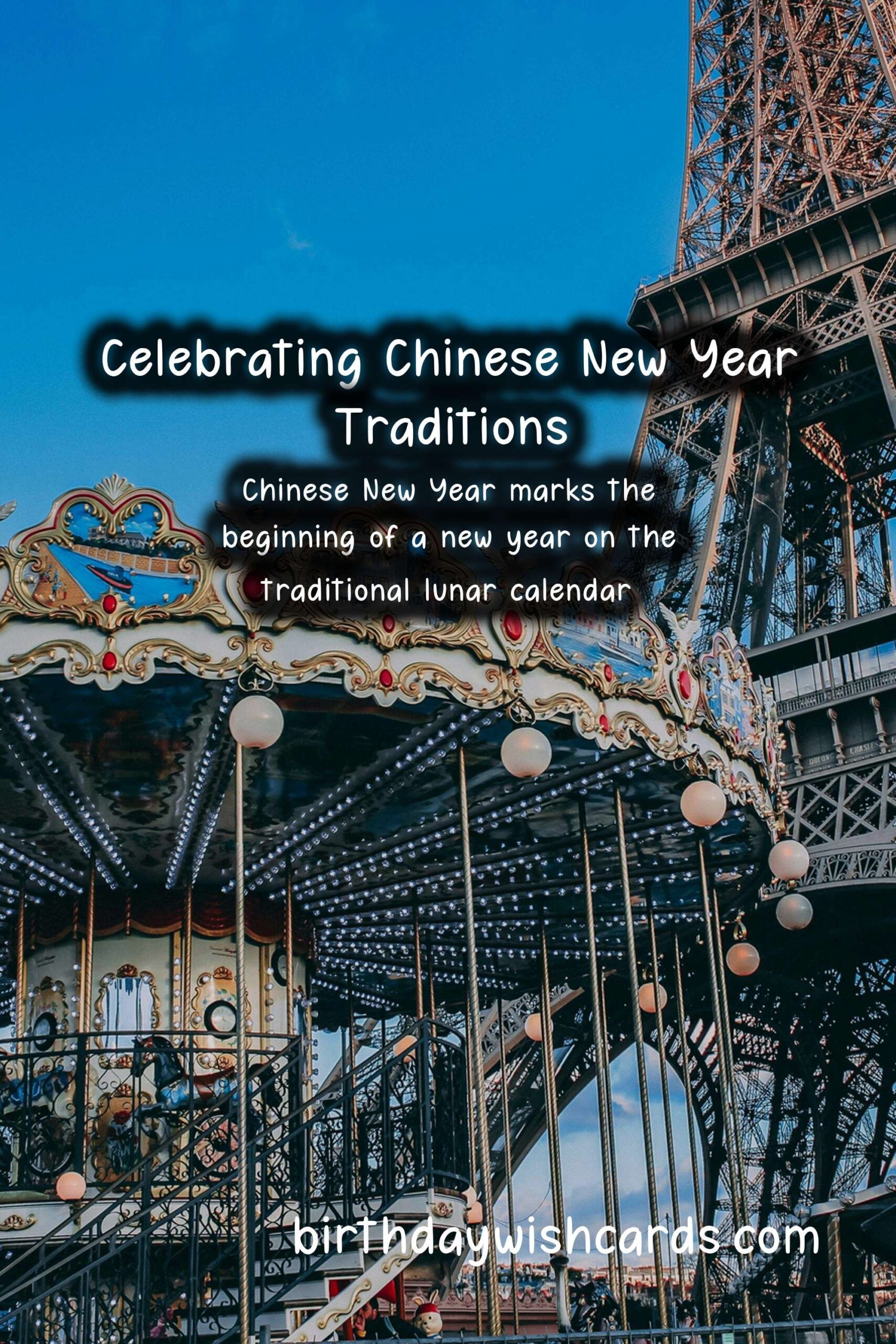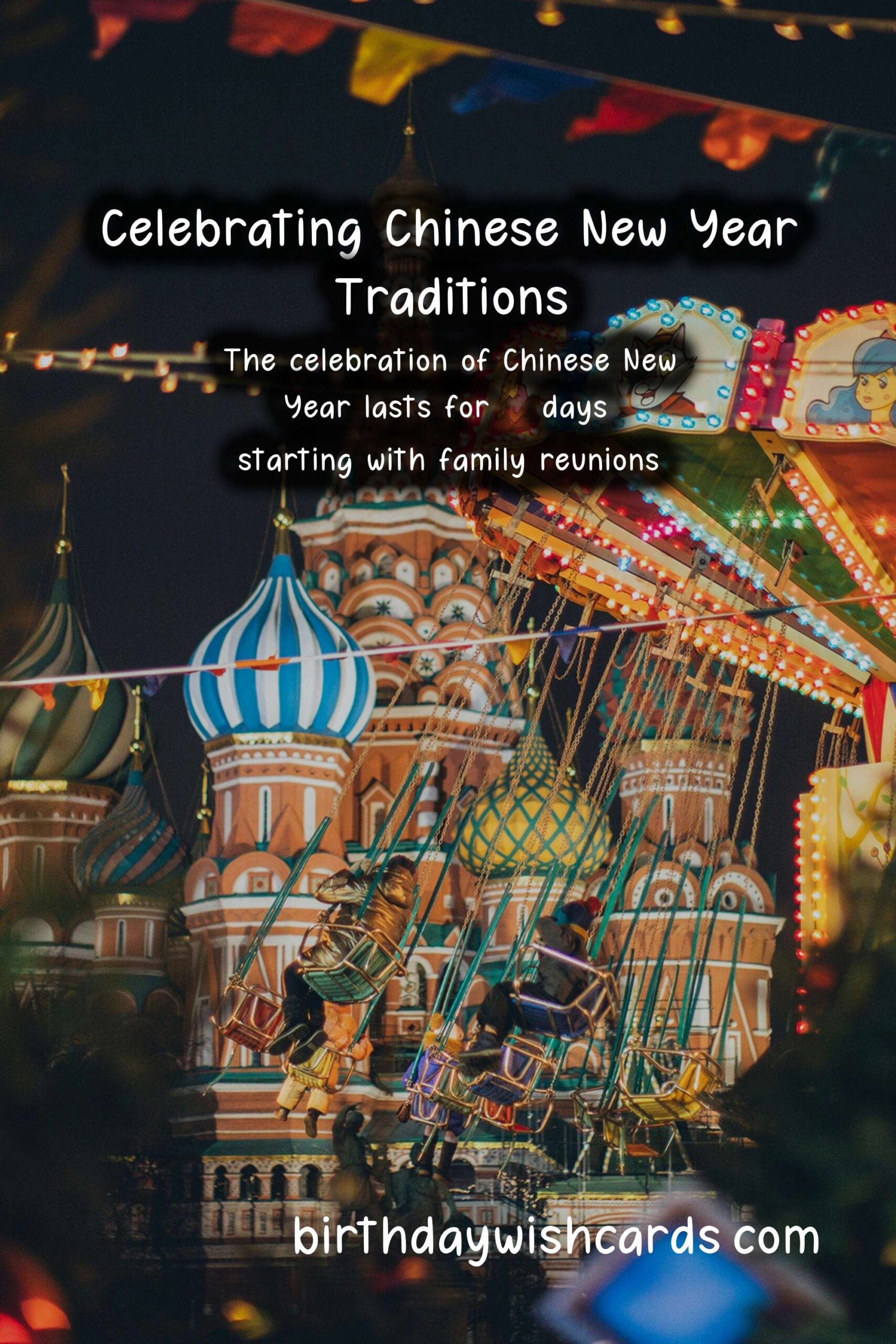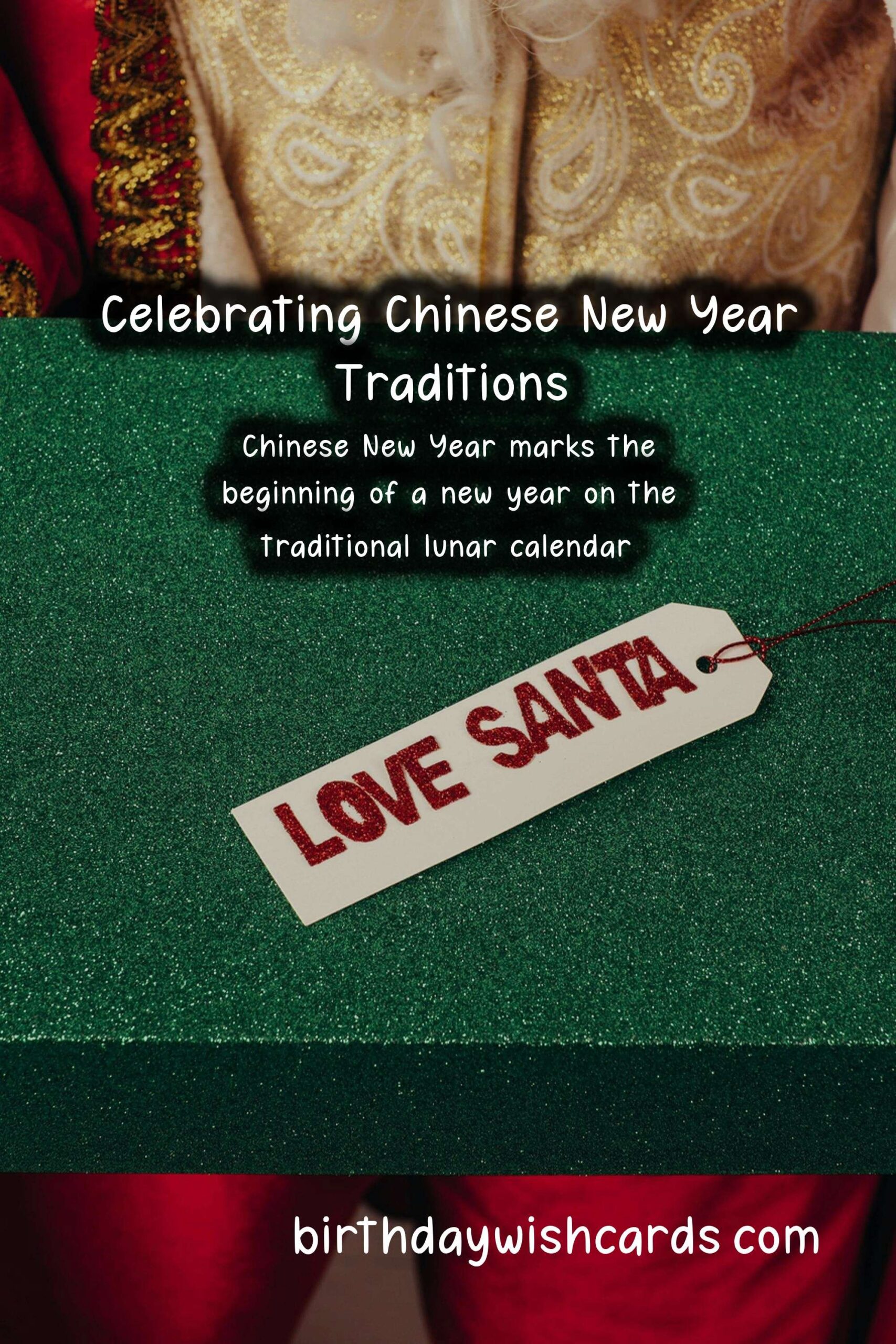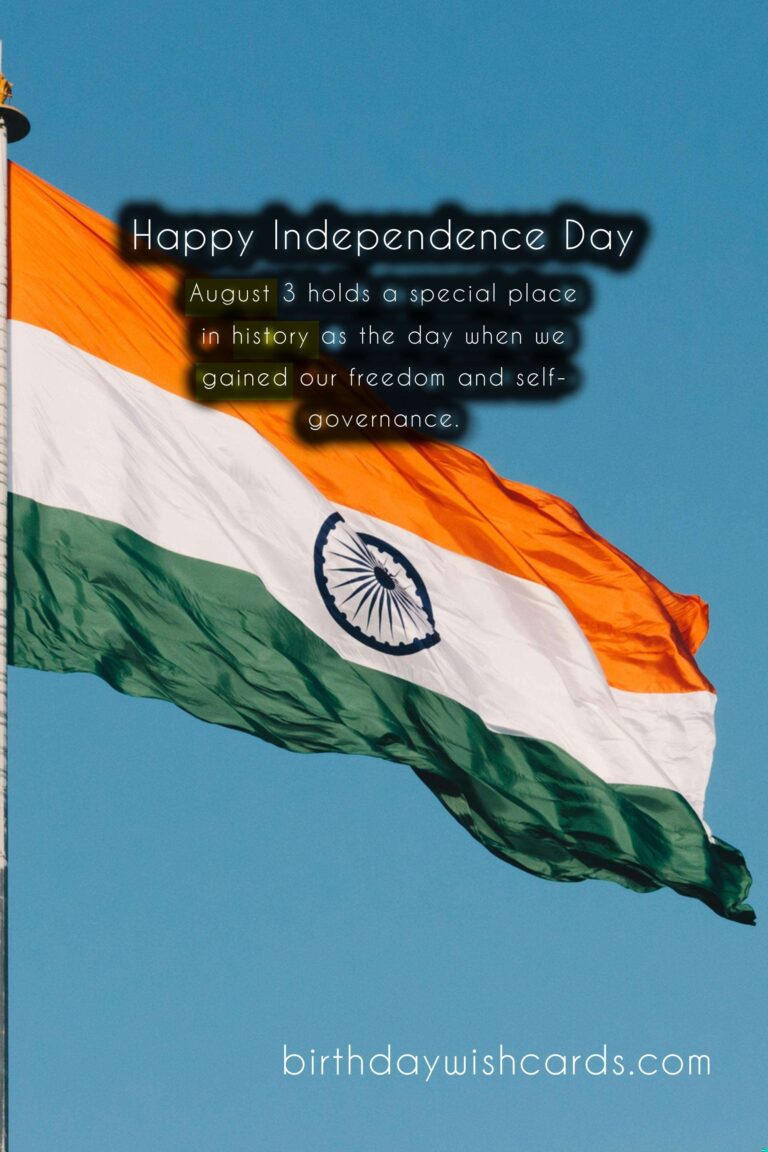How Chinese New Year is Observed in Various Countries
How Chinese New Year is Observed in Various Countries
Chinese New Year, also known as Lunar New Year or Spring Festival, is a festival celebrated in many countries around the world. This holiday marks the beginning of a new year on the traditional lunar calendar and is rich in cultural significance and traditions. It is observed by millions of people, not just in China but also in countries with significant Chinese populations. In this article, we will explore how Chinese New Year is observed in various countries, highlighting unique traditions and celebrations.
1. China
In China, Chinese New Year is the most important festival of the year. The festivities last for 15 days, starting from the first day of the lunar calendar. The eve of Chinese New Year is marked by family reunions, where families gather for a feast that often includes dishes symbolizing prosperity, such as dumplings and fish. The celebrations begin with fireworks to ward off evil spirits and are followed by the Lion Dance and the Dragon Dance.
The second day of the New Year is often reserved for visiting relatives and friends, while the third day is considered an inauspicious day for visiting others. Traditionally, on the fifth day, people celebrate the God of Wealth with special rituals, and by the 15th day of the New Year, families enjoy the Lantern Festival, where lanterns are lit and displayed.
2. Taiwan
In Taiwan, Chinese New Year holds a similar significance as in mainland China, but it also includes unique local customs. Preparations begin well ahead of time, with a thorough cleaning of homes to sweep away ill fortune. During the celebrations, Taiwanese families enjoy traditional influences such as vegetarian meals on the first day of the New Year and various street fairs that add to the festive atmosphere.
Additionally, Taiwanese people embrace the tradition of giving red envelopes filled with money, known as ‘hongbao,’ to children and unmarried adults, symbolizing good luck and good fortune. The Lantern Festival is also celebrated with striking displays of colorful lanterns, echoing similar festivities seen in China.
3. Singapore
Singapore, with its multicultural society, celebrates Chinese New Year with splendid public festivities. The highlight is the Chingay Parade, which showcases vibrant floats, cultural performances, and impressive dragon and lion dances. Singaporeans also adorn their homes with decorations in red and gold, symbolizing happiness and prosperity.
During the New Year celebrations, the famous street of Chinatown transforms into a festive market where visitors can enjoy traditional foods and capture the spirit of the holiday. Local customs include the ‘lo hei’ dish—a salad made of raw fish, vegetables, and sauces that families share, tossing the ingredients for luck.
4. Malaysia
Malaysian Chinese celebrate the New Year in various ways, influenced by both Chinese and Malay traditions. The celebration lasts for 15 days, and like many other regions, it kicks off with family reunions and feasts. Festivities include communal prayers at temples, colorful decorations, and street parties.
In Malaysia, the unique twist is the tradition of ‘open houses’—where families invite friends and neighbors from all cultural backgrounds to celebrate together. Special dishes include ‘nian gao’ (sticky rice cake) and ‘satay’, showcasing the blend of cultures within the celebrations.
5. Indonesia
In Indonesia, Chinese New Year, known as ‘Imlek,’ is recognized as a national holiday. The celebration includes family gatherings, temple visits, and public celebrations. Traditions often combine local customs, leading to a vibrant fusion of festivities. During Imlek, decorations mainly include red lanterns and banners representing good fortune.
The giving of red envelopes filled with money is also common, much like in China and other countries. Special local dishes are prepared, and on the day itself, many perform rituals to pray for blessings in the coming year.
6. Vietnam
In Vietnam, Chinese New Year is referred to as ‘Tết Nguyên Đán’ or simply ‘Tết.’ While it shares similarities with the Chinese New Year, Tết has its unique customs and traditions. Preparations start weeks before the New Year, involving cleaning, decorating, and cooking. Vietnamese families prepare a variety of traditional foods like ‘Bánh chưng’ (square sticky rice cake) to honor their ancestors.
The first day of Tết is reserved for close family, and the following days are for visiting friends and neighbors. Vietnamese people often perform ceremonies to remember their ancestors, emphasizing respect for family and tradition.
7. The Philippines
In the Philippines, Chinese New Year is celebrated in areas with significant Chinese communities, notably in places like Binondo, Manila, considered the oldest Chinatown in the world. Filipino-Chinese families celebrate with traditional Chinese customs mixed with Filipino culture. Families prepare dishes for prosperity and hold reunions.
Filipino traditions include the practice of ‘Sikolohiyang Pilipino’ where families celebrate by lighting firecrackers and showing off dragon dances. The holiday is a colorful mix of traditions, demonstrating the deep-rooted cultural associations between the Chinese and Filipino communities.
8. Thailand
In Thailand, the Chinese New Year is celebrated prominently in Bangkok’s Chinatown. The festival is marked with parades, food fairs, and cultural performances, showcasing traditional Chinese arts. Many Thai-Chinese families celebrate by wearing bright red clothing and preparing festive feasts for the New Year.
The festival is a time for family gatherings, and many families visit temples to pray for fortune and good health in the New Year. Thai-Chinese also partake in various local customs that blend Thai culture with Chinese traditions, making the celebrations unique.
9. Conclusion
Chinese New Year is a vibrant and joyous celebration observed in various ways across different countries. While the underlying themes of family, fortune, and festivity remain constant, each country adds its own cultural flair, creating a rich tapestry of traditions. From the bustling celebrations in China to the unique festivities in countries like Vietnam and the Philippines, Chinese New Year continues to unite communities worldwide in celebration and reverence for cultural heritage.
Chinese New Year marks the beginning of a new year on the traditional lunar calendar.
The celebration of Chinese New Year lasts for 15 days, starting with family reunions.










#ChineseNewYear #LunarNewYear






